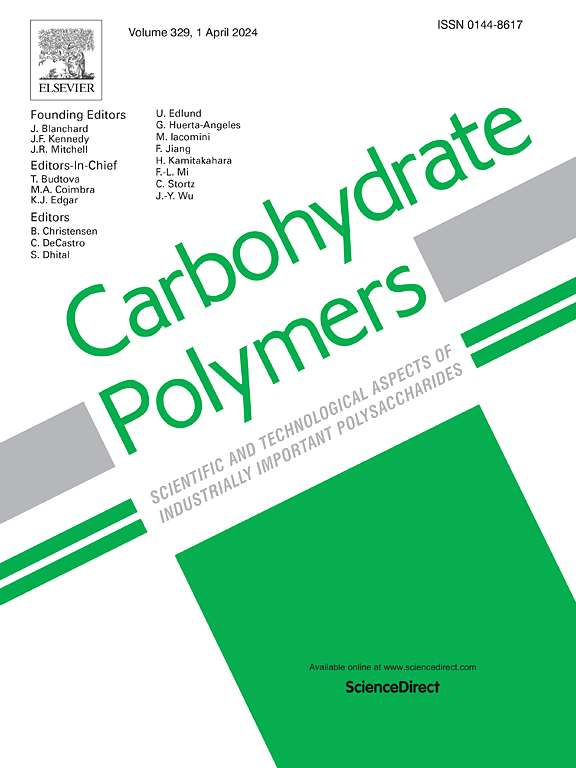The preparation and characterization of pineapple peel cellulose nanofibers and its application in oil-water emulsions
IF 10.7
1区 化学
Q1 CHEMISTRY, APPLIED
引用次数: 0
Abstract
This study explored the potential of pineapple peel waste as a sustainable source of cellulose nanofibers (CNF) for Pickering emulsion stabilization. Pineapple peel cellulose, enzymatically extracted and subsequently TEMPO-oxidized and sonicated to produce TEMPO-oxidized cellulose nanofibers (TC), was investigated as an emulsifier. The effects of TC concentrations (0.2, 0.4, 0.6, 0.8, and 1.0 % wt%) and oil phase volumes (20 %, 30 %, 40 %, and 50 %) on rheological properties, and emulsion stability were determined. Results demonstrated that increasing TC concentration significantly enhanced emulsion stability through the formation of a cohesive three-dimensional network structure. This stability was maintained across a broad range of pH, ionic strength, and temperature. Molecular dynamics simulations supported these findings, revealing that TC enhances emulsion stability through favorable intermolecular interactions. This work highlights the potential of pineapple peel-derived CNF as a sustainable and high-performing alternative for emulsion stabilization applications.

求助全文
约1分钟内获得全文
求助全文
来源期刊

Carbohydrate Polymers
化学-高分子科学
CiteScore
22.40
自引率
8.00%
发文量
1286
审稿时长
47 days
期刊介绍:
Carbohydrate Polymers stands as a prominent journal in the glycoscience field, dedicated to exploring and harnessing the potential of polysaccharides with applications spanning bioenergy, bioplastics, biomaterials, biorefining, chemistry, drug delivery, food, health, nanotechnology, packaging, paper, pharmaceuticals, medicine, oil recovery, textiles, tissue engineering, wood, and various aspects of glycoscience.
The journal emphasizes the central role of well-characterized carbohydrate polymers, highlighting their significance as the primary focus rather than a peripheral topic. Each paper must prominently feature at least one named carbohydrate polymer, evident in both citation and title, with a commitment to innovative research that advances scientific knowledge.
 求助内容:
求助内容: 应助结果提醒方式:
应助结果提醒方式:


